

A Historic Church
The original church located at 64th and Woodlawn was designed by the renowned American architect, Henry J. Schlacks in 1923 for the needs of the Carmelites and their growing parish of St. Clara in Chicago’s south side.



Schlacks designed this church from the beginning to reflect the majesty and glory of Rome here in the heart of America. Strong yet elegant, new yet timeless, this sacred place was built to stand not only the test of time, but also the trials of change. In the architect’s own words, “There are no buildings in the world more monumental than those of Rome…. The structure is certainly sincere being solidly built entirely of masonry and stone. The tower itself is of solid stone walls with a solid stone floor; in other words, indestructible.”


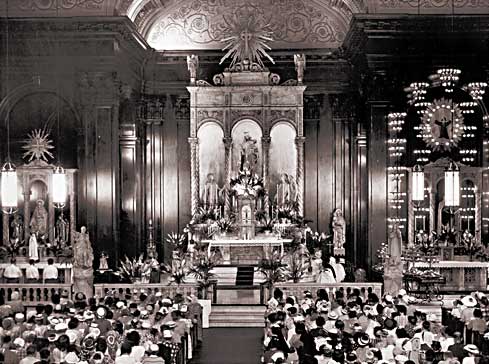
With the canonization of St. Therese of Lisieux in 1925 by Pope Pius XI, the church of St. Clara became the National Shrine of this beloved and venerated saint. During the Eucharistic Congress held in Chicago the following year, nearly 100,000 people visited the National Shrine in devotion to the “Little Flower”, St. Therese of the Child Jesus.



In the late 1970’s, the church suffered a devastating fire, which destroyed the original interior. Nevertheless, the exterior remained strong, and the imposing structure was still among the most noble of Chicago.
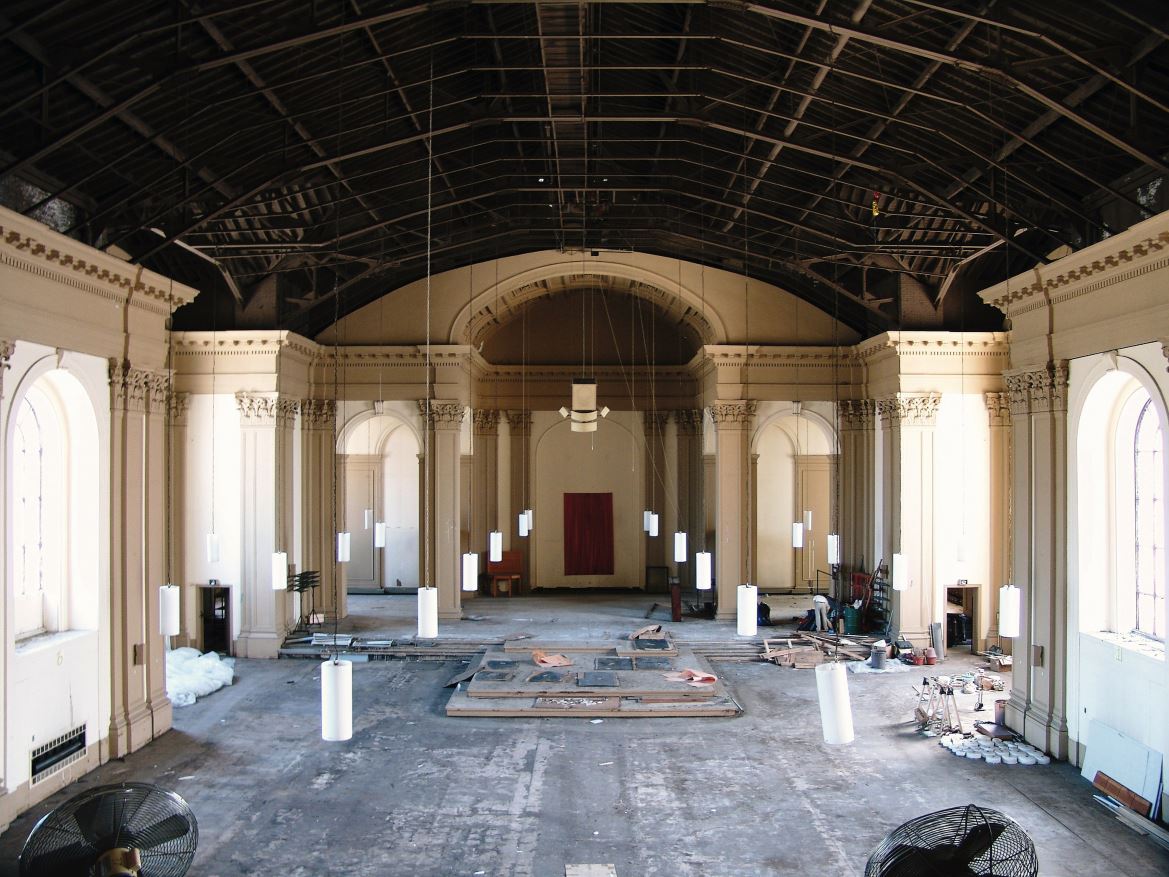

Never having fully recovered, the parish was closed, and the church was scheduled for demolition at the turn of the millennium. The local community, not wishing to see this gem of history be lost to the wrecking ball, petitioned the city to bestow upon this church the prestigious status of an Historic Landmark. The church was saved, but who would restore it?
Arrival of the Institute
In 2004, the late Francis Cardinal George, needing someone willing to undertake the great responsibility of not only restoring this historic building, but moreover of reviving its spiritual and sacramental life as the only remaining Catholic church in Woodlawn, invited the Institute of Christ the King Sovereign Priest to reopen this historic church.

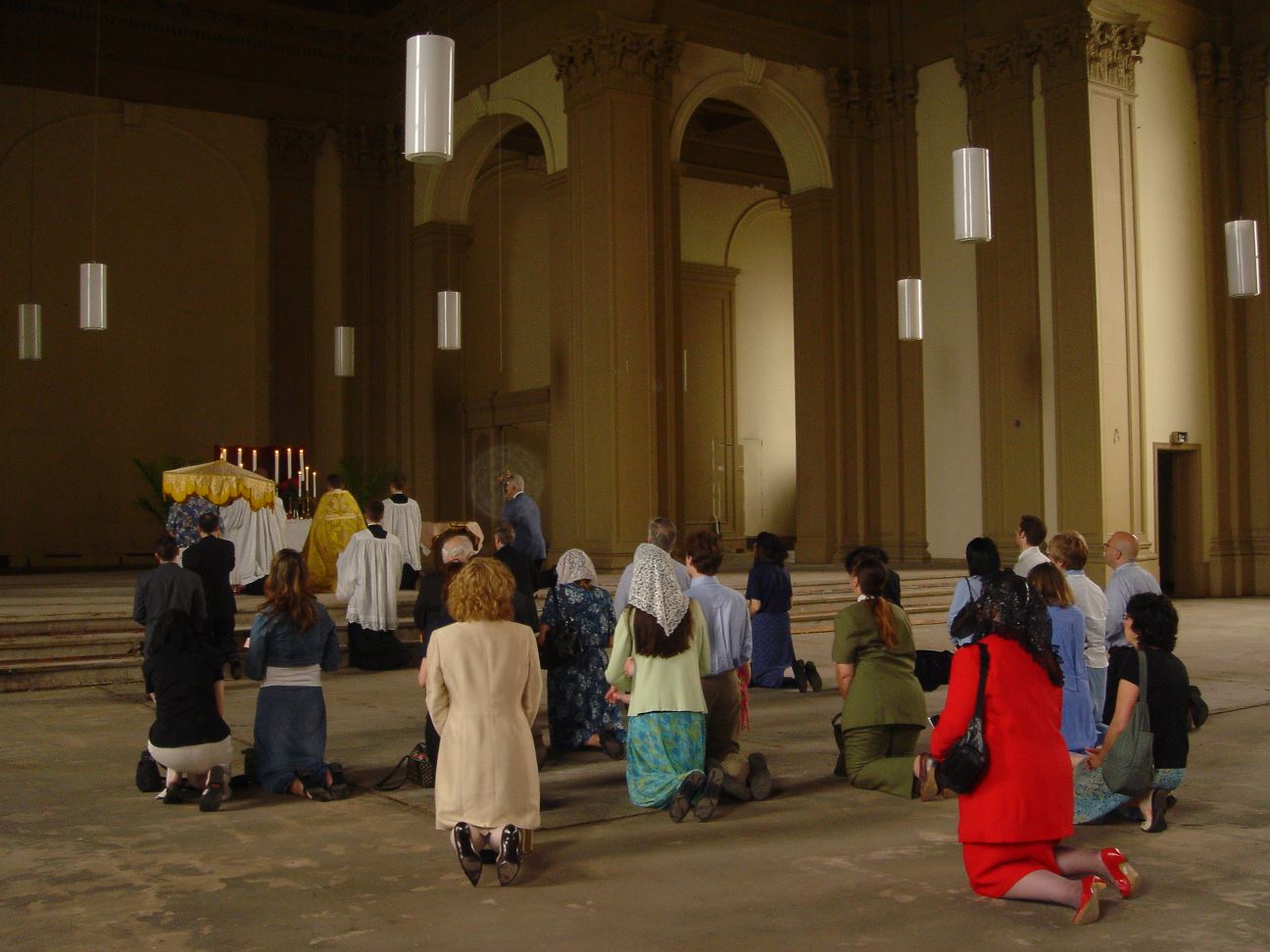

A newly-founded society of apostolic life within the Roman Catholic Church, the Institute of Christ the King humbly accepted the Cardinal’s invitation, mindful of the many challenges in fulfilling such a task.
Understanding the great importance of the historic city of Chicago as well as its central location in the United States and international accessibility, the superiors of the Institute chose to establish this historic church and the neighboring priory as the National Headquarters of the Institute’s young American Province and to reopen its doors as the Shrine of Christ the King in honor of the Institute’s namesake devotion to Christ, the Holy Infant King.



The priests and oblate brothers of the Institute quickly got to work cleaning and restoring the church’s unshaken yet tired exterior. Provisional decorations, pews, and altars were erected in order to reopen the church as soon as possible, all with the hope that future funds would allow for the complete restoration of the interior in God’s good time and by the generosity of forthcoming benefactors.



While the “living treasures” of the church quickly multiplied as many local families and those from hours away began coming to the Shrine of Christ the King, the want of substantial funds however slowed the restoration process. Progress was made little by little as donations were given over the next ten years, but everything would change on October 7, 2015.
A Fateful Day
Before dawn on the morning of October 7, 2015, the priests and oblate brothers of the Institute woke up to the smell of smoke. The Shrine of Christ the King was burning. They quickly evacuated their home and watched as 150 firemen fought the uncontrollable blaze for the next five hours. The flames engulfed the church and utterly consumed the roof, causing everything within its walls to be burned or crushed by the falling metal and debris. The walls and tower, however, remained firmly in place.
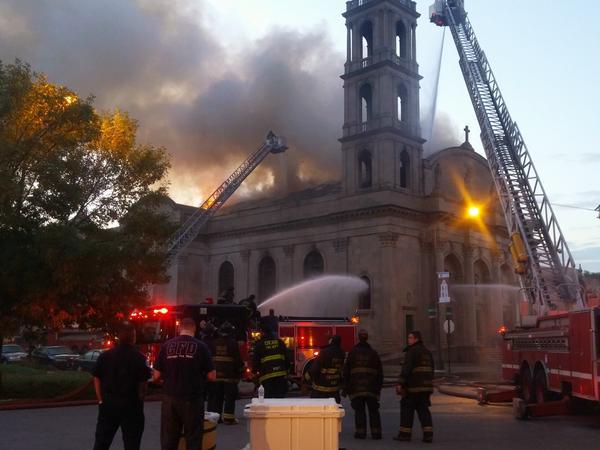


With the fire finally at bay, Canon Matthew Talarico, the Institute’s Provincial Superior asked the firemen if they could attempt to retrieve the Tabernacle with the Most Blessed Sacrament and to rescue the Shrine’s centerpiece statue of the Holy Infant King. Unsure what to find amidst the rubble, five firemen entered the smoldering remains determined to find the gilded Tabernacle containing the Holy Eucharist and the 17th century, wooden statue of the Child Jesus, the Infant King.
Through the swamp of muddy ash, broken pews and roof debris almost a half a football field long, the firemen arrived finally in the sanctuary. To their disbelief, they found the Tabernacle unharmed and the wooden statue of the Holy Infant King there in its place, standing above the Tabernacle. The Infant King’s right hand was still raised in blessing, His crown still firmly on His head, and the Child seamed even to smile slightly through the soot that covered His cheeks.
Despite the roof having collapsed all around the altar and the heat of the fire having been so extreme as to warp the brass crucifix that stood atop the Tabernacle, the Infant King was miraculously not destroyed. Having made it through the boggy maze, the firemen needed now to retrace their steps, but this time, with these fragile treasures in their arms.
The priests and oblate brothers awaited outside the church with the local media under the now blue skies of a beautiful October morning. They were joined now by the neighbors and faithful who had arrived for the regularly scheduled Mass at 8:00 am.


After what seemed like an eternity of uncertainty, the firemen emerged from the front doors of the church. Amidst the tears of disbelief, the first appeared with the wooden statue of the Holy Infant Jesus in his arms, followed by the others with the Tabernacle on their shoulders. Like a scene from the Old Testament, these brave men carried the Ark of the New Covenant out into the street, returning it and its sacred contents safely to the priests. The consecrated Hosts within its golden doors were unharmed and were distributed at Holy Communion later that day to those who attended Holy Mass in a neighboring chapel.


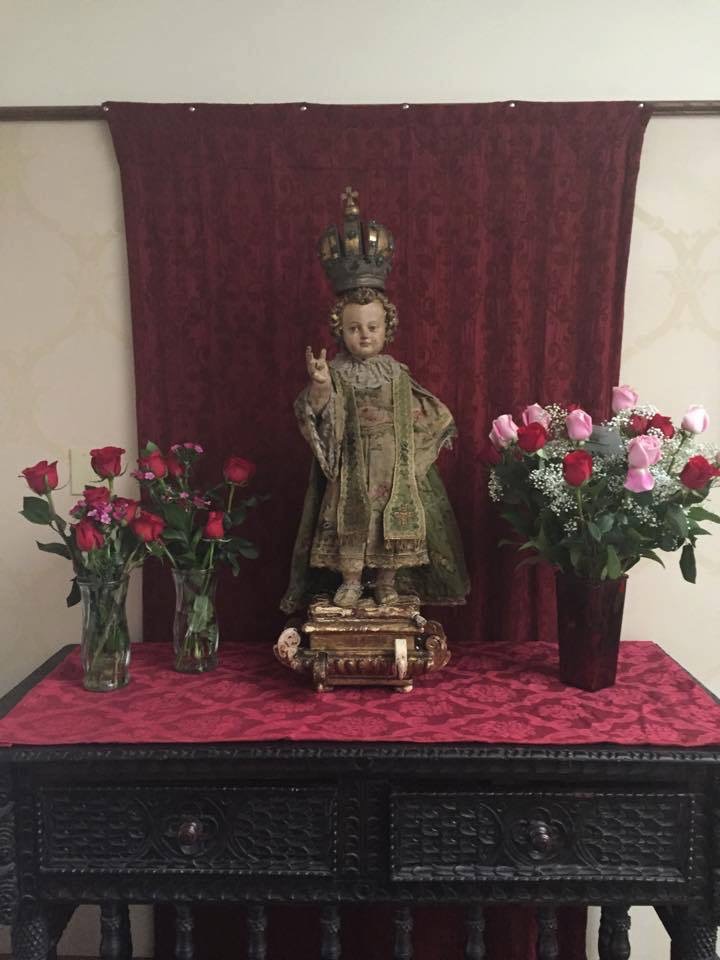
No one could believe it; a 400-year-old wooden statue covered in cloth was neither consumed by the infernal heat of the fire nor destroyed by the thousands of gallons of water and as many tons of debris that hailed down around it on every side. Amidst the present sadness, there was an indescribable joy; in the wake of despair, there was a surreal sense of hope.
Upon closer examination of the Holy Infant Jesus statue rescued from the ruins, there was but one thing missing from His beloved and familiar pose. His crown, though dirtied, was still upon His head, telling of His divine royalty. His right hand was still raised in blessing, showing the love and benevolence of His reign. The only thing missing from His left hand was the world.
In all depictions of Christ the Infant King, the globe, representing the universe, is carried in His left hand. He blesses the world, which He created and holds in the palm of His hand. Now, it was no longer there. It was as if someone had knocked it out of His hand to try and take it away from Him, away from His blessings, and away from His grace. The globe was found amidst the rubble, and the priests of the Institute had it restored and replaced back in His left hand so that He may once again bless the creation He loves.
Though the church’s interior was utterly destroyed, the immovable walls were as Henry Schlacks had always described them, “in other words, indestructible”. It was as if the Shrine of Christ the King was like an analogy for the Universal Church in our time, and the Institute of Christ the King was willing to cooperate with God’s grace to help “rebuild His Church”.
Following several months of earnest deliberation with officials concerning the fate of this historic church once again in ruins, the Provincial Superior of the Institute of Christ the King remained adamant in his conviction: “We will rebuild the church”.



Finally, in February of 2016, the Archdiocese of Chicago deeded the property to the Institute of Christ the King Sovereign Priest that they might have ownership of the church and rebuild it to be their Provincial Headquarters and Shrine in the United States. Now owning the church and the land on which it was built, the resurrection from ashes was about to begin.
Resurrection from Ashes
Led by the conviction and resolve of the priests, oblate brothers and members of the faithful, the Institute was determined to rebuild this historic church as the Shrine of Christ the King and their Provincial Headquarters in the United States. Over the next three years, by the goodness of God, Phase I of a three-phase campaign was achieved. Over $4 Million dollars was raised by the generosity of the Institute’s friends and benefactors from around the country in order to:
- Ensure the structural stability of the building and the tower
- Demolish and remove all damaged materials
- Rebuild all damaged masonry
- Anchor all interior masonry to the exterior stone
- Construct an entirely new parapet
- Tuckpoint all interior masonry for lasting stability
- Fabricate and install new steel roof trusses and metal decking
- Insulate, protect, and shingle the new roof
- Rebuild the lateral flat roofs and their drainage systems
- Install a new gutter and drainage system
- Insulate and fireproof the interior ceiling
- Restore the original window frames
- Replace all exterior windows with laminated safety glass









Meanwhile, the beloved statue of the Holy Infant King was fully restored. A small temporary chapel was assembled in the church hall next door, where once again the Holy Infant King stands firmly upon the very same Tabernacle that was also rescued that day from the fire. The famous words of the Infant Jesus to the Venerable Father Cyril are written on the Tabernacle doors: “The more you honor Me, the more I will bless you”.


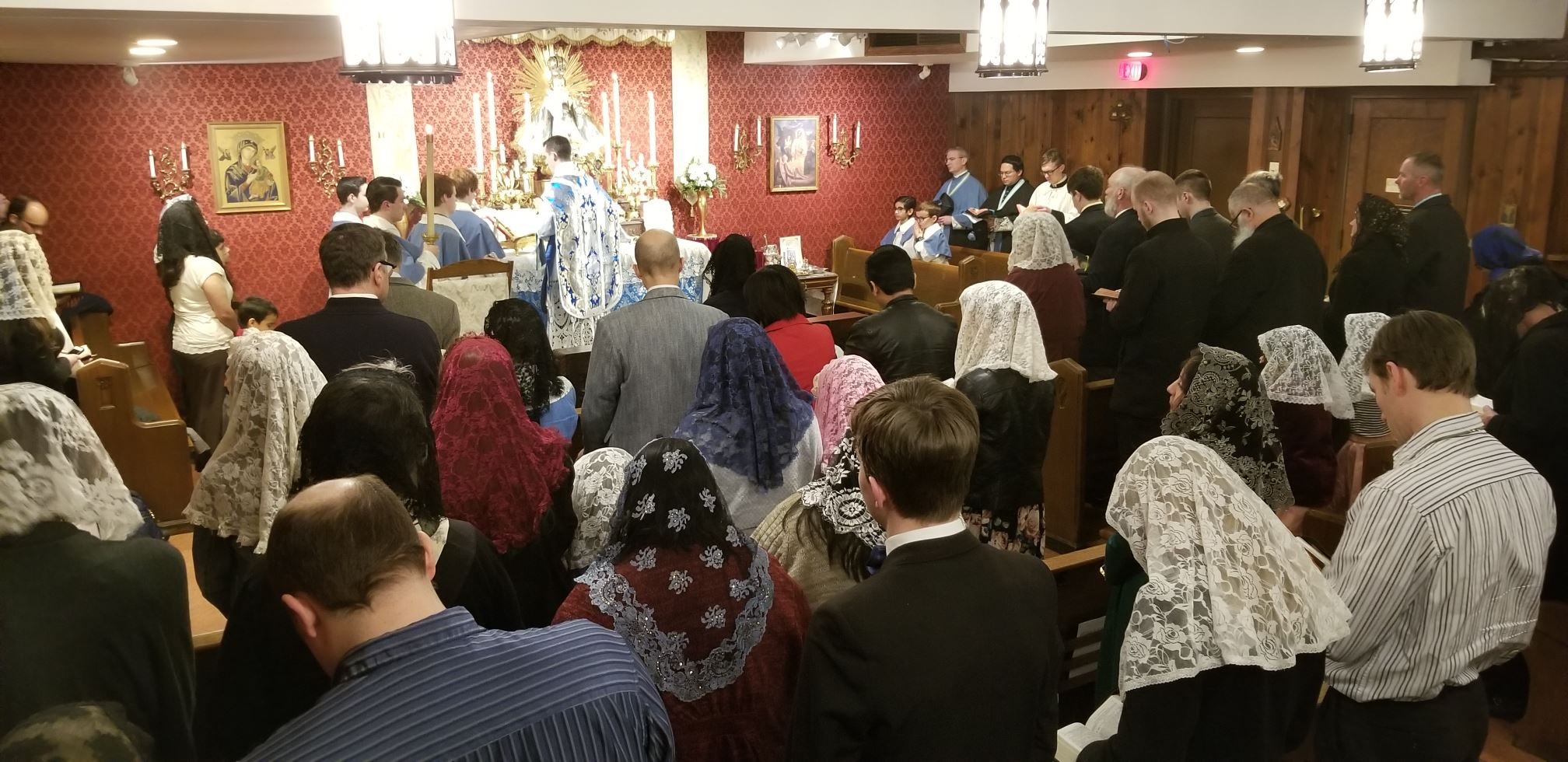
The priests continue to offer Holy Mass daily for the increasing number of people who come to the chapel to honor the Holy Infant King, despite their momentary displacement from the church.
The brand-new roof structure was completed in November 2018, just before Thanksgiving. In gratitude to almighty God for the innumerable blessings received thus far, a Mass of Thanksgiving was offered within the walls of the newly sheltered church. It was the first time in three years, and for the occasion, the statue of the Holy Infant King was returned to His proper home within the sanctuary of the Shrine of Christ the King.



From December 2018 until April the following spring, Phase I was brought to completion and preparatory work for Phase II of this monumental undertaking began. The design for the master plan was finalized, plans were drafted, a new fundraising effort was launched, and by May of 2019, the Shrine of Christ the King had a fresh new look from the outside, signaling to all the beginning of the interior transformation about to take place.






